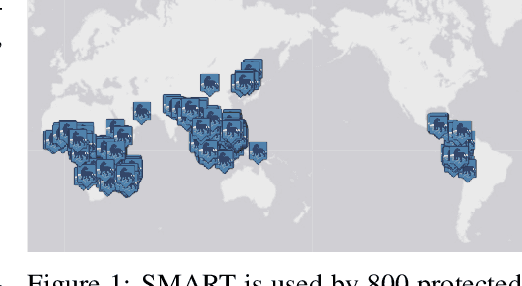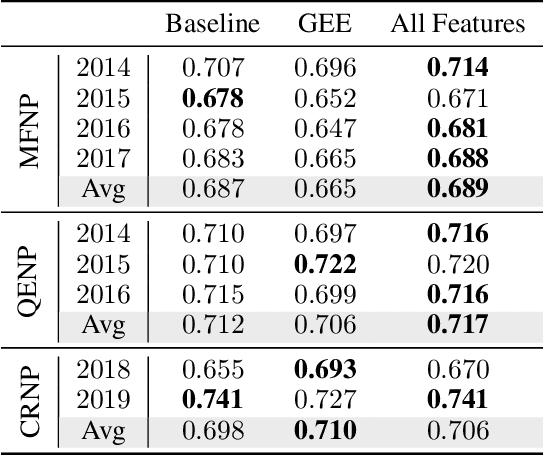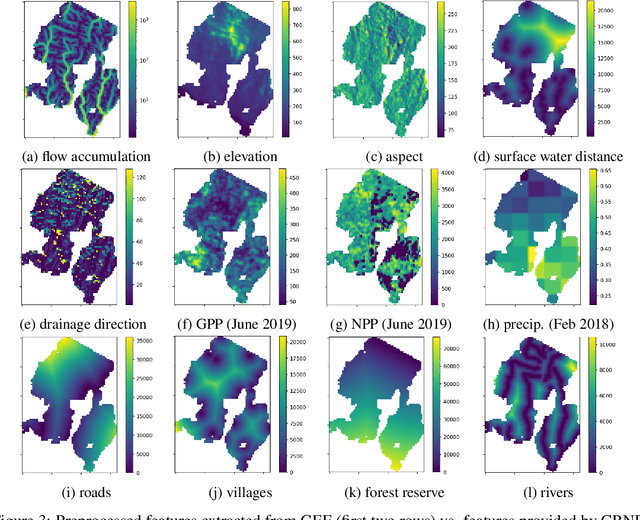Enhancing Poaching Predictions for Under-Resourced Wildlife Conservation Parks Using Remote Sensing Imagery
Paper and Code
Nov 20, 2020



Illegal wildlife poaching is driving the loss of biodiversity. To combat poaching, rangers patrol expansive protected areas for illegal poaching activity. However, rangers often cannot comprehensively search such large parks. Thus, the Protection Assistant for Wildlife Security (PAWS) was introduced as a machine learning approach to help identify the areas with highest poaching risk. As PAWS is deployed to parks around the world, we recognized that many parks have limited resources for data collection and therefore have scarce feature sets. To ensure under-resourced parks have access to meaningful poaching predictions, we introduce the use of publicly available remote sensing data to extract features for parks. By employing this data from Google Earth Engine, we also incorporate previously unavailable dynamic data to enrich predictions with seasonal trends. We automate the entire data-to-deployment pipeline and find that, with only using publicly available data, we recuperate prediction performance comparable to predictions made using features manually computed by park specialists. We conclude that the inclusion of satellite imagery creates a robust system through which parks of any resource level can benefit from poaching risks for years to come.
 Add to Chrome
Add to Chrome Add to Firefox
Add to Firefox Add to Edge
Add to Edge